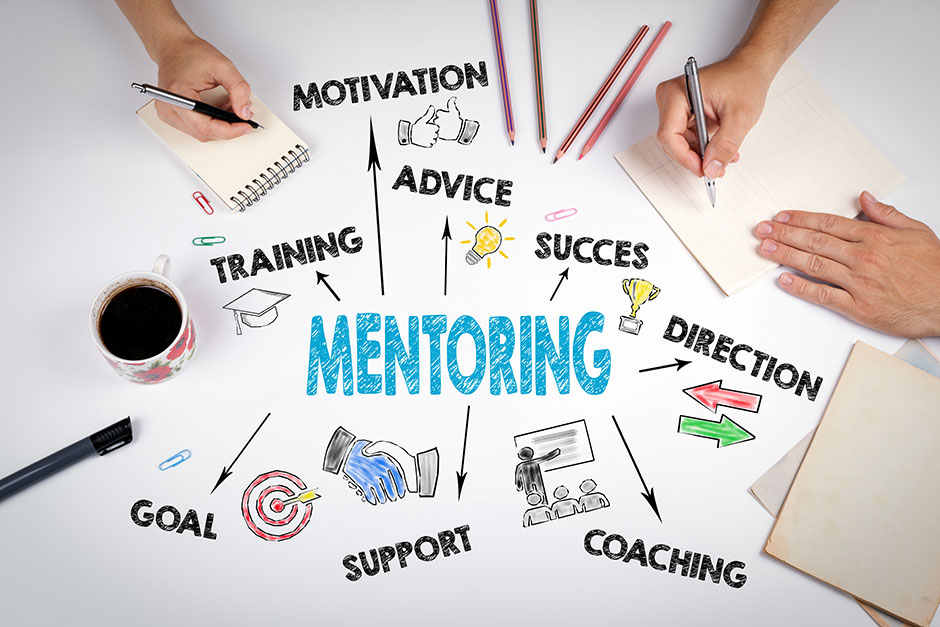Executive Forum
Star Power
The Importance of Being – and Having – A Dynamic Mentor
In this month's Executive Forum, Saia's Vice President of Human Resources Michelle Richard talks about how mentoring can help inspire others to see their potential.
As adults, most of us can easily identify a person who had a significant and positive impact on us. It could be a teacher, a coach, a minister, a parent or another family member. Regardless, chances are that someone, somewhere along the way, acted as a mentor to you. This impact shouldn't stop once you start working. If anything, workplace mentors can be some of the most important and influential people you cross paths with in your professional life. Through mentoring, not only doesn't critical institutional knowledge and leadership skills pass from one generation or level of leadership to the next, but metrics like productivity, morale and efficiency are also dramatically improved. Stated differently, a workplace environment where mentoring is a priority is a more harmonious, engaged, innovative and positive environment. To this point, there is a reason why mentoring is one of the oldest forms of influence and knowledge sharing: It works! It can hardly be disputed that, for every successful leader, there is likely a mentor that assisted him/her along the way.
In general, mentoring is a fairly simple concept: it’s the passing of knowledge and wisdom from one person to the next. It’s a way to help and guide another person’s development without the expectation of personal or monetary gain. In practice, it’s a tool to nurture and grow talent, a mechanism to retain hard-earned experience and wisdom, and a way to re-energize leaders while re-engaging employees. Mentors can be friends, relatives, coworkers, teachers, supervisors, etc. They can work in any industry, be any race and national origin, be any gender, have diverse backgrounds and backstories, and be any age. So can mentees. Both have a very symbiotic relationship to each other. Mentees observe, question and explore; mentors demonstrate, explain and model. The only determinant to being a mentor or mentee is how can you learn from and better each other?
As you can see, mentoring is premised on being partners, on being equally yoked, so to speak; at its core, it is a partnership, and requires both the mentor and the mentee to commit to making it be successful. It will only be as effective and as impactful as you both want it to be, so like any partnership, it requires investment, time and attention. The more you invest, time you commit, and attention you give, the more impactful, successful and dynamic the mentoring relationship will be for the both of you. In other words, you get out of it, what you put into it. Mentoring is not a passive activity; it is not a date on a calendar, a phone call, or a set of talking points. It is a dynamic exercise that is full of energy, of exchanging information and knowledge, and of growth on both sides. But, what exactly is a dynamic mentor? What precisely does a dynamic mentee do?
- Desire to develop and help others (usually without an “official” reward or recognition). A good mentor will do it because they genuinely want to see you succeed
- Have the commitment, time and energy to devote to the mentoring relationship
- Possess up-to-date/relevant knowledge, skills and expertise
- Have a willingness to share failures and personal experiences
- Have a “learning attitude," meaning they are curious, inquisitive and open-minded
- Are willing to listen, ask questions, and share, while also creating a safe space for the mentee to similarly share
- Committed to investing in their professional development
- Committed to expanding their capabilities and focused on achieving professional results
- Willing to ask for help
- Open and receptive to learning and trying new ideas
- Able to accept feedback and act upon it
- Willing to experiment and apply what they learn to the job
- Personally responsible and accountable
- Able to communicate and work cooperatively with others
A dynamic mentoring partnership creates a legacy for both the mentee and the mentor. For mentees, it can improve career mobility, it can be an opportunity to receive candid feedback as well as encouragement, it can be an opportunity to develop new contacts and/or grow your professional network, and the chance to grow your potential in ways you may not have ever imagined. In fact, the latter has been my own personal experience. I attended law school after a journalism professor, who was impressed by my writing and debate skills, encouraged me to be a lawyer. I studied abroad after a history professor encouraged me to do so and arranged for me to meet with different scholarship organizations. I began to work in human resources (HR) after an HR EVP-turned-mentor notified me of an opening on her team. This list goes on and on. I’m certain that we all have similar experiences with similar leaders who saw something in us that maybe we didn’t even see in ourselves, who encouraged us, and who took the time to help us see our potential.

Dynamic mentoring relationships are predominantly built on trust as both the mentor and the mentee have to be able to open up and share information, including failures as well as successes and missteps as well as leaps of faith. It is this candid exchange of information that enables growth, encourages feedback, and hones potential. To that end, when you select a mentor or a mentee, ensure that it is someone that you trust because trust enables candor. Candor or honesty is the other cornerstone of a dynamic mentorship. You have to be honest with each other. You have to be able to give honest feedback, critiques, and perspectives. Political gamesmanship and/or double-speak are of little use in a dynamic mentorship. Once you have trust and honesty, the other desirables are easy: credibility, knowledge/experience, compatibility, accessibility and commitment. For mentees, the mentoring relationship starts once you identify what you need from a mentor to achieve your professional goals; for mentors, the mentoring relationship starts once you find a mentee whose potential and capacity align with your expertise and leadership style. When the two align, a plan must then be crafted including a clear definition of the goal(s) of the mentorship, an honest assessment of strengths/opportunities and an actionable plan to address the same. Lastly, a clear expectation regarding commitment (time and otherwise) must be outlined. Do these things, and then voila, let the dynamic mentoring began!
In summary, it has been said that, “mentoring is a brain to pick, an ear to listen, and a push in the right direction.” Once a mentoring relationship has been established, the goal is to recreate it over and over again. As leaders, whether you wear the title or are designated as such, we are all mentors; as employees, we are all similarly mentees of our organization’s institutions, standards and culture. We should all strive to be the mentor we wish we had and to inspire others to see their potential, their star power.




